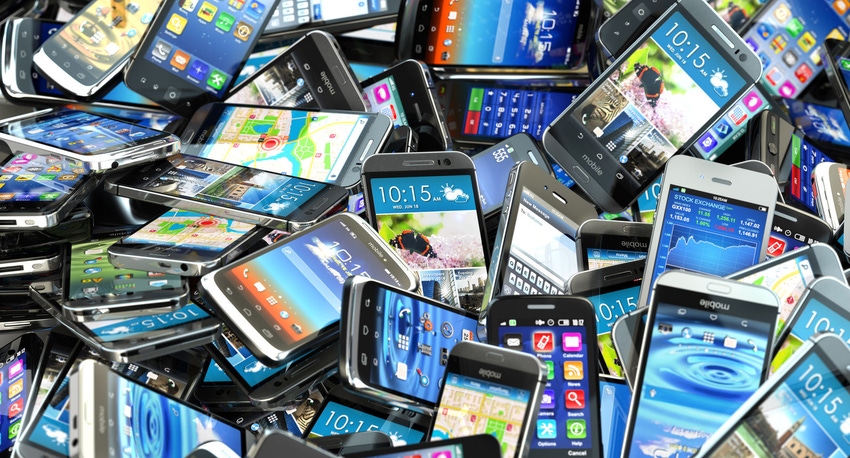Worst case scenario: European smartphone shipments down by 50% for 2020
IDC estimates suggest European smartphone shipments could halve year-on-year for 2020 if the pandemic hits as hard as it is threatening to.
April 16, 2020

IDC estimates suggest European smartphone shipments could halve year-on-year for 2020 if the pandemic hits as hard as it is threatening to.
For those who have an optimistic side, IDC is now forecasting smartphone shipments will decline 10% year-on-year for 2020, but the worst-case scenario could see shipments plummet as much as 47%. This is down from 6.4% growth which was forecast in February, prior to the most severe impacts of the COVID-19 outbreak.
“In addition to the increasing number of economic forecasts that the drop in GDP in major European countries could be double that seen in 2008, if lockdowns need to continue towards the summer we have to take into account other factors in the current situation,” said Simon Baker, Programme Director for devices at IDC EMEA.
“Much of phone retail is shut, while for the rapidly growing numbers of newly unemployed their priority this year will be just getting by.”
Earlier this week, Thérèse Coffey, the Secretary of State for Work and Pensions for the UK, said there were 950,000 new claims were put forward for unemployment benefits in the final two weeks of March. If accurate, unemployment in the UK could potentially double from 3.9% in January, the most recent figures from the Official of National Statistics (ONS).
According to the International Monetary Fund (IMF), other nations could be hit harder than the UK.
“Spain will be hard hit for a number of reasons,” said Poul Thomsen, Director of the European Department at the IMF.
“They are hard hit by the pandemic, but looking beyond the immediate impact, Spain’s dependence on tourism is, again, a special vulnerability. Spain has a large number of small and medium sized enterprises, and that’s a further vulnerability because such enterprises often do not have the financial resources and the buffers to withstand significant shocks.
A higher number of SMEs and a high reliance on tourism are not factors limited to Spain either. Italy, France, Portugal and a number of other European nations could see the pandemic wipe out irrecoverable revenues.
With economic activity continuing to decline and unemployment on the rise, the prospect of global recession is daunting. If the economic downturns in 2008 and 2015 are anything to go by, the telco industry should be bracing for impact.
However, what makes this situation unique is the closure of the high street.
Although more smartphone sales are moving to online channels, that does not mean every consumer will purchase a device without seeing or holding it. A browse through the mobile phone shops on the high street might add more confidence to the consumer, who is being asked to spend eye-watering amounts on smartphones nowadays.
Model | Launch Price | Average Salary (UK) |
iPhone 4 (2010) | $749 | £25,879 |
iPhone 5 (2012) | $849 | £26,500 |
iPhone 6 Plus (2014) | $949 | £26,936 |
iPhone 7 Plus (2016) | $969 | £28,028 |
iPhone 8 Plus (2017) | $949 | £28,600 |
iPhone X (2017) | $1149 | £28,600 |
iPhone XS Max (2018) | $1449 | £29,588 |
iPhone 11 Pro Max (2019) | $1449 | £30,350 |
As you can see from the rapid rise in price for an iPhone over the last decade, consumer wallets are being pressed harder than ever. It should be noted that a smartphone does so much more in 2019 than it did in 2010, but the wealth of consumers (and therefore spare cash to spend on goods such as smartphones) has not risen comparatively.
At a time where frivolous spending will be limited as much as possible, the prospects do not look the most encouraging for the smartphone industry.
“In Europe the biggest impact will clearly be in countries such as Italy and Spain, the places hardest hit by the crisis, but under our probable scenario we are expecting nearly all European markets to drop by around a fifth,” said Marta Pinto, Programme Manager at IDC EMEA.
What remains to be seen is how quickly European economies can be reignited.
Spain has recently said it will attempt to ease the lockdown in an attempt to revive its economy, while French President Emmanuel Macron announced this week the lockdown would be extended to May 11. UK politicians are discussing extensions and easements behind closed doors, and Germany is planning to slowly lift restrictions over the coming weeks.
Working through the pandemic and removing restrictions on the lives of the consumers is only the first step, the tricky job will be bringing the economy back online and growing consumer confidence once again. With livelihoods threatened and earnings decreasing (hopefully only temporarily) consumers will not want to spend significant chunks of monthly salaries on smartphones immediately.
About the Author(s)
You May Also Like








.png?width=300&auto=webp&quality=80&disable=upscale)


_1.jpg?width=300&auto=webp&quality=80&disable=upscale)


.png?width=800&auto=webp&quality=80&disable=upscale)